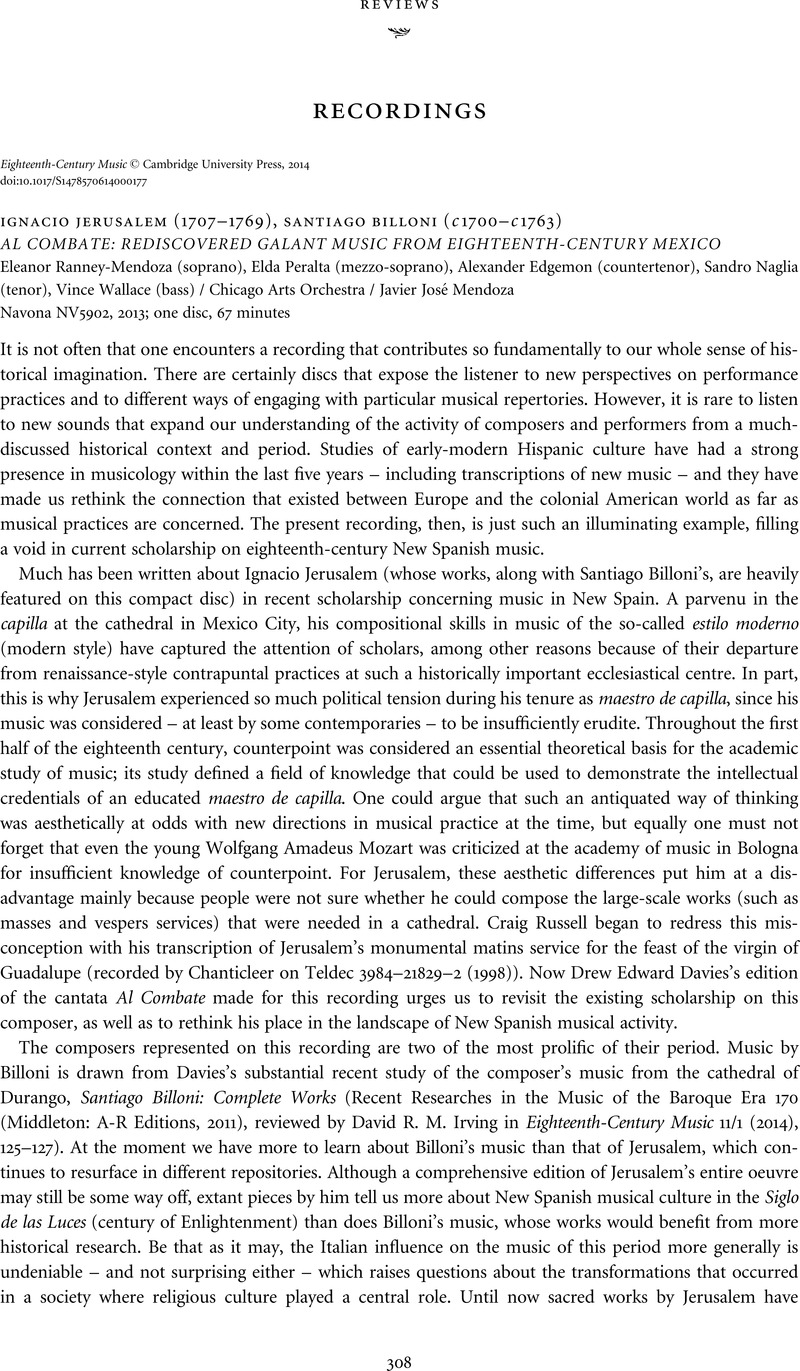No CrossRef data available.
Article contents
IGNACIO JERUSALEM (1707–1769), SANTIAGO BILLONI (c1700–c1763)AL COMBATE: REDISCOVERED GALANT MUSIC FROM EIGHTEENTH-CENTURY MEXICOEleanor Ranney-Mendoza (soprano), Elda Peralta (mezzo-soprano), Alexander Edgemon (countertenor), Sandro Naglia (tenor), Vince Wallace (bass) / Chicago Arts Orchestra / Javier José MendozaNavona NV5902, 2013; one disc, 67 minutes
Published online by Cambridge University Press: 07 August 2014
Abstract
An abstract is not available for this content so a preview has been provided. Please use the Get access link above for information on how to access this content.

- Type
- Reviews: Recordings
- Information
- Copyright
- Copyright © Cambridge University Press 2014




